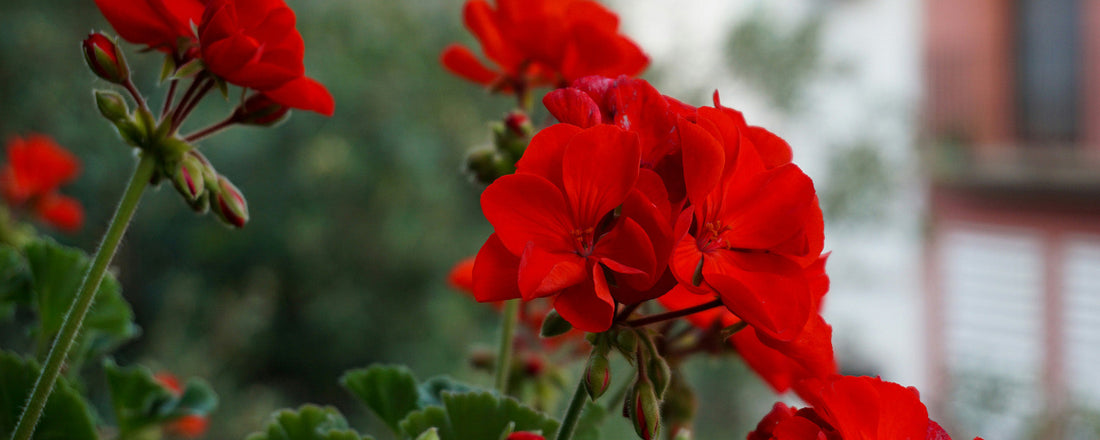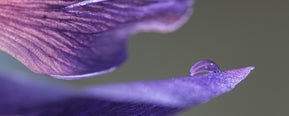Decoding the Smell of Geranium: Earthy, Floral, or Herbal?
What does Geranium smell like?
This versatile note is intriguing with green-floral freshness, combining rosy undertones and minty notes into an experience-awakening fragrance.
We will discover its subtle fragrance profile, its key role in perfumery, and uncover why Indie Perfume House Buchart Colbert loves using geranium to craft elegant, multi-layered Eau de Parfums.
What Does Geranium Smell Like?
Geranium has a unique olfactory personality that is instantly recognizable.
Not rose's sweetness, richness, nor mint's cool, sharp tone, geranium inhabits a middle ground, both floral and herbal, light and delicate.
Perfumers often describe it as crystalline, a note that cuts through richer accords with precision, ensuring balance without overshadowing other elements.
Geranium scent profile:
- Fresh and green: It reminds me of dew-drenched leaves in early morning sunlight, crisp and clean.
- Rosy yet sharper: Less sweet and greener, geranium is molecularly similar to rose but more invigorating.
- Minty and citrusy undertones: These subtleties lend a refreshing lift, almost like a fleeting breeze carrying herbs and citrus peel.
- A balancing heart note: Situated in the middle of the fragrance pyramid, geranium bridges top notes with base notes, creating continuity in the scent’s story.
It leaves an impression of clarity, refinement, and refinement, never overwhelming, always intentional, serving as both a harmonizer and an illuminator in a perfume’s design.
The Origin of Geranium in Perfumery
Geranium’s perfumery journey begins with Pelargonium graveolens, known as rose geranium. Indigenous to South Africa, its aromatic presence was cherished by local communities long before it entered European gardens and apothecaries.
With colonial trade routes, geranium made its way to the Mediterranean, Egypt, China, and Réunion Island, each region producing oils with subtle variations depending on climate, soil, and cultivation practices.
Throughout history, geranium’s qualities transcended scent alone.
In folk medicine, it was valued for its perceived air-purifying and spirit-reviving properties. Aromatherapists considered it both invigorating and soothing, a paradox that aligned perfectly with its dual olfactory character.
By the 19th century, as modern perfumery blossomed in France, geranium became a staple ingredient, where its herbal-green brightness brought structure to complex formulas.
Botanical & Cultural Context
Geranium is both botanical and symbolic. It has existed as a symbol for all cultures of comfort, protection, and strength.
In Victorian England, a garden geranium meant friendship and domestic peace. Herbalists credited its essential oil with balancing properties, describing it as both uplifting for the weary and calming for the restless.
Because it thrives in a wide range of climates, from Mediterranean coasts to cool English gardens, geranium became a universal emblem of adaptability and constancy.
Extracting the Geranium Note
Steam distillation coaxes geranium's oils out of stems and leaves into a golden oil.
Rich in citronellol and geraniol, compounds that echo rose's tender allure, this process preserves the plant's innate freshness, transforming raw greenery into a perfumer's ink.
The terrain where they grow dictates their notes: Reunion Island's variants lean rosy and sweet, while Egyptian harvests favor green-minty vigor, and Chinese fields add citrus tang.
Synthetic counterparts, born of lab precision, amplify the minty crispness, offering perfumers tools to tailor accords without seasonal whims.
Yet, the true artistry lies in naturals, where earth's subtle variances craft unique olfactory tales.
How to Experience Geranium in Perfume
Bright and green at first, geranium slowly unfolds into a calm, floral scent that lingers quietly.
As a bridge note, it unites olfactory families, florals with woods, herbs with spices, creating seamless transitions that enrich the overall scent composition.
In warmer climates, its clean, renewing aura provides a refreshing veil, ideal for compositions that capture summer's fleeting grace.
On skin, geranium evolves uniquely, interacting with body warmth to unfold facets unseen on mere paper strips, inviting deeper immersion into its narrative.
Common Misconceptions: Similar Scents, Very Different Stories
Geranium’s adaptability makes a perfumer’s toolkit essential. Its ability to weave together contrasts gives it immense versatility.
Misconception 1: Geranium smells the same as a rose
Geranium and rose possess identical molecular frameworks but distinct fragrance identities.
Rose is sweet, rich, and sensual, while geranium is about clarity, sharpness, and freshness. It is not a substitute for rose but rather a complementary counterpart.
Misconception 2: Geranium is a “feminine” floral only
Geranium’s crisp freshness makes it a central note in masculine fougères and unisex scents.
Its versatility allows it to perform equally well in robust, woody blends and delicate, floral constructions. Its presence defies gender boundaries, speaking instead to refinement and balance.
Misconception 3: Geranium smells medicinal
While geranium can appear herbaceous in isolation, within a balanced composition, it delivers complexity and polish.
Paired with florals or spices, its green-citrus freshness becomes elegant rather than clinical, proving its place in fine perfumery.
Summary Table in the Scent Profile
| Notes | Typical Placement | Scent Profiles | Impact on Perfume Character |
|---|---|---|---|
| Geranium | Heart note | Green, rosy, minty, citrus | Adds freshness, balance, clarity |
| Rose | Heart note | Sweet, romantic, floral | Softens geranium, adds richness |
| Mint | Top/Heart note | Cool, fresh, herbal | Enhances geranium’s refreshing side |
| Vetiver | Base note | Earthy, woody, smoky | Grounds geranium, creates depth |
Why Buchart Colbert Uses Geranium
At Buchart Colbert, geranium is not an add-on but one voice in a grander composition.
In Mischa, for example, geranium provides green-floral counterpoint to saffron's glow and to resin's warmth, a whiff of herbal lightness that elevates the entire creation.
This careful balance is a reflection of our approach: fragrances designed like symphonies, each note deliberate, each transition carefully orchestrated.
Our perfumer, a classically trained musician, uses geranium the way a composer employs a recurring motif, anchoring the story while allowing for variation and nuance.
Its herbal-green sharpness is not meant to dominate but to guide, ensuring that the fragrance unfolds gracefully over hours.
Key Takeaways
What does Geranium smell like? Geranium is a rosy, floral-green with a citrus bite and minty undertones.
Used as a vibrant heart note, geranium adds harmony, equilibrium, and lucidity to countless compositions. Misunderstood by some as overly floral or medicinal, geranium reveals true elegance when blended with florals, woods, spices, or herbs.
At Buchart Colbert, we use geranium subtly in Mischa and our other perfumes to tell stories through fragrance.
Explore our perfume collection or Sample Discovery Set to find your personal scent harmony.
FAQs
Besides “What does Geranium smell like?”, Geranium continues to intrigue fragrance enthusiasts with its versatile profile.
1. Is geranium a masculine scent?
Geranium transcends gender, its sharp, aromatic edge suiting masculine compositions while its floral softness fits unisex blends equally well.
2. Does geranium smell like lavender?
Geranium shares an aromatic sharpness with lavender but leans more floral and rosy, lacking lavender's pronounced herbal notes.
3. What is another name for a geranium?
In perfumery, it's often called rose geranium or Pelargonium graveolens.


